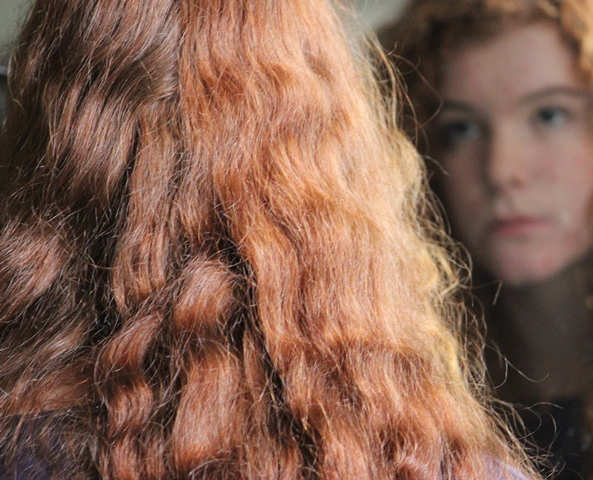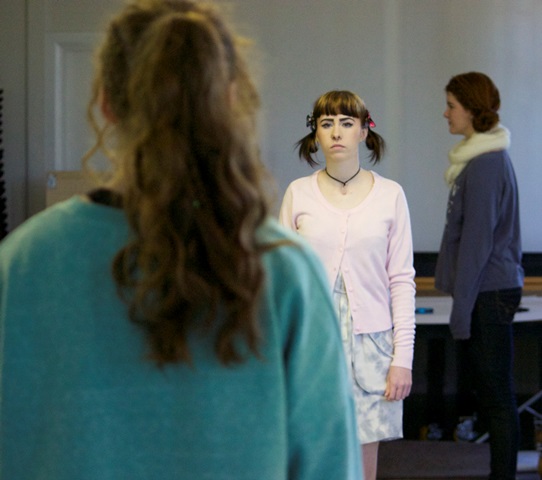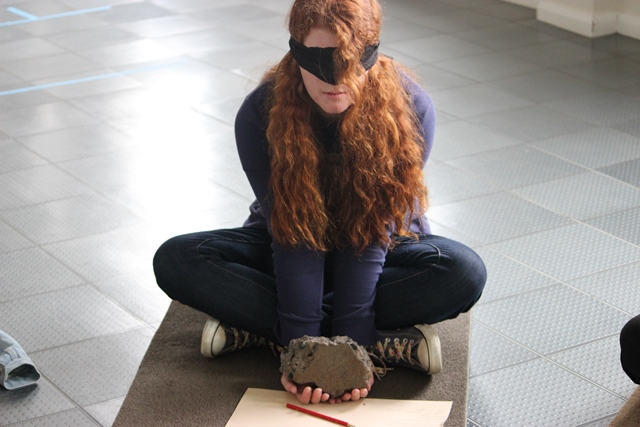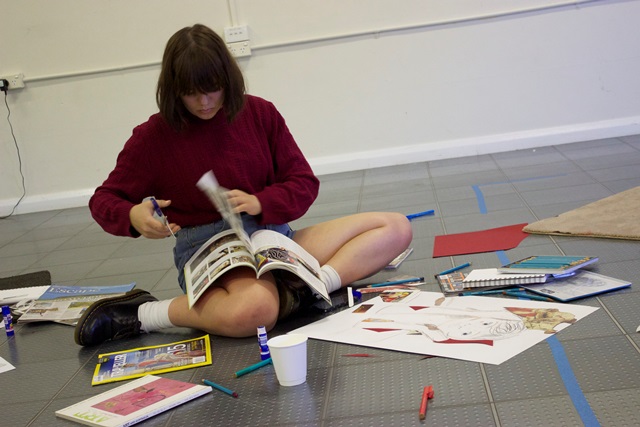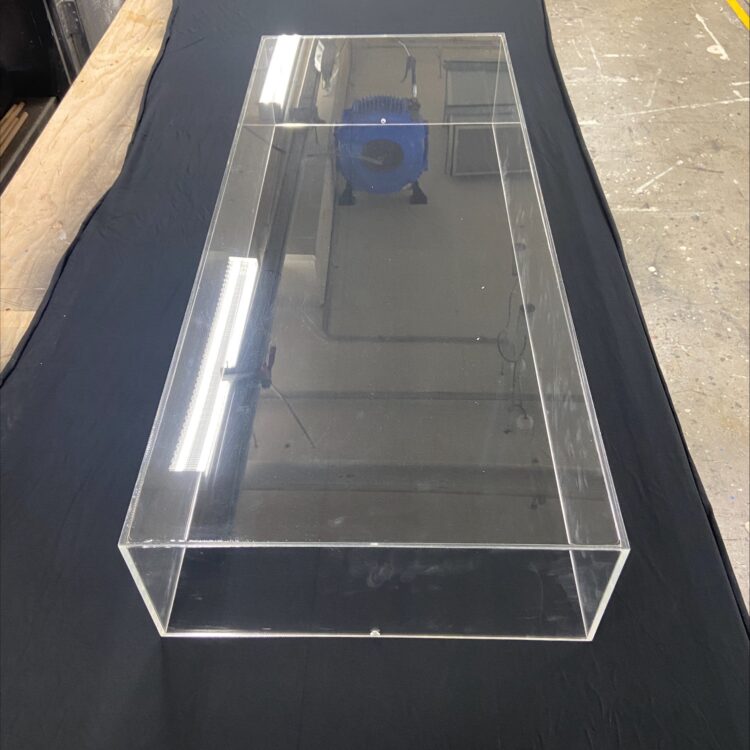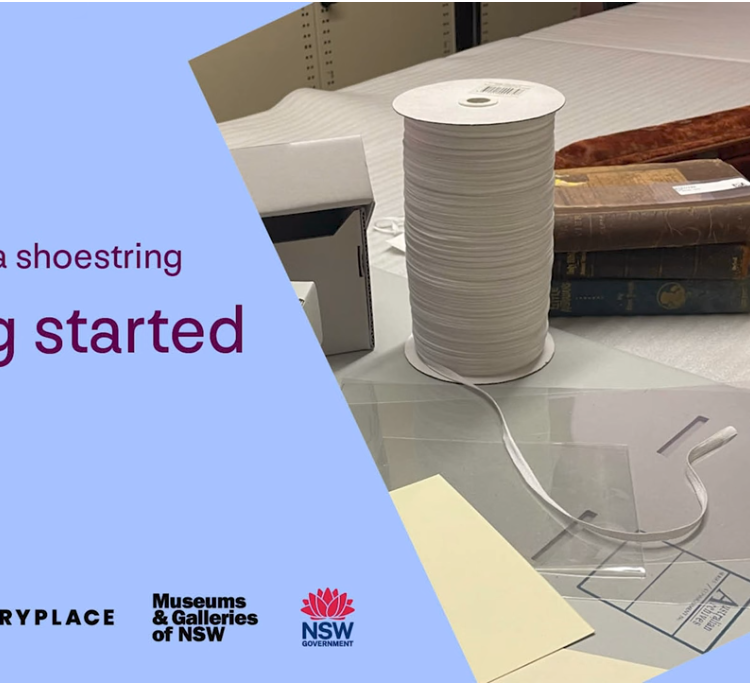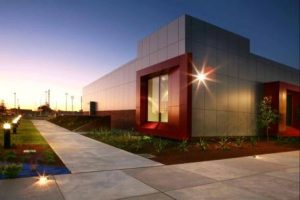It’s been six weeks since our Pilot Regional Engagement Project started and with two weekends of workshops behind us, it’s an interesting time to reflect on what we’ve learnt so far.
1. The invisible hours are the most important
Working with teenagers and in a community you’re not usually part of, there’s always a risk that no one will show up.
All nine of our participants did show up (and on time…) and despite not all knowing each other, they were quick acknowledged the uniqueness of the opportunity, which made for an immediately supportive group environment.
This couldn’t have happened without the many invisible hours we spent in regular communication with them, their parents, their teachers and the team at the Cultural Centre in the lead up to the first weekend. Maintaining that communication has so far ensured the retention and investment of everyone involved.
2. Don't assume anything
We had asked the participants to submit an introductory form outlining what they hoped to get from the experience so we knew before we arrived that most had little or no knowledge of performance art, contemporary art or Marina Abramović.
So, the first day was dedicated to exploring what performance art is; what forms it can take and how it’s anything but theatre. We showed a selection of works from artists including Abramović, Yoko Ono and Tehching Tseih and with each work asked the same three questions:
- What do we think are the artist’s intentions?
- What role does the audience play?
- How successful is it?
Day two focused on autobiography, perception and identity construction. Activities included creating abstract self-portraits that were then analysed by the group and an exercise in response to Glenn Ligon’s series Runaways exploring how others see us and make judgements accordingly.
We had hoped that as a group they might be interested in creating works that explored the experience of being a teenager in regional Australia but discussing this particular experience only led to moaning about Dubbo. Eventually a more nuanced perception was negotiated but it reminded us not to assume anything. Especially when it comes to teenagers.
3. Amazing things can be achieved with trust
One of the risks in working with performance art is that its process of creation involves a lot of introspection, critical thinking and honesty. Which in turn, can generate the need for significant pastoral care.
Prior to the workshops we had been made aware of some existing mental health, sexuality and self-esteem issues, and while this didn’t alter the workshop activities we ran, it remains an on-going point of consideration in managing discussions and presenting ideas.
Several participants have since chosen to explore some of these issues directly through their work, which is a testimony to the level of trust we have built. It’s going to make for important, memorable performances – for the participants and the viewers.
4. Work with brilliant people
Theatre Director Imara Savage spends a lot of time with the group taking them through basic ensemble training: how to be present, how to be aware of your body and its movement, how to listen to the energy of the group, how to avoid fidgeting and giggling and breaking focus.
Artist Lottie Consalvo, one of the 12 residency artists living on-site at Pier 2/3, joined us for the second weekend, and devised workshops that focused on the process of creation.
Amongst other activities, the group had to stare at themselves in a mirror for 20 minutes: they had to respond emotionally not descriptively, to a series of objects handed to them while blindfolded, and they had to sit and squeeze an orange for one minute while the rest of the group looked on.
Both Imara and Lottie listened to the group, respected them as individuals and earned their trust. This allowed us to push them out of their comfort zone, ask critical questions and importantly, give critical feedback.
At this stage in the project, many participants already have a sense of the work they want to create. That most of the group got to this point relatively easily reflects the importance of working with people whose personal skills as well as professional expertise best fit the audience.
5. 'Be' there, even when you're not
One of the issues with a regional pilot program is that there often weeks between workshops when nothing happens. To partially fill the void, we created a Tumblr page to document the project and to distribute material between visits.
Initially we hoped that the participants would also submit their own research, work, and ideas but so far that hasn’t been the case. See Point 2.
Regardless, it remains a useful way to share resources and images with the group, and to be present and available to the participants remotely.
You can see the blog here: www.kaldorpublicartprojects.tumblr.com
6. Connect - don't exist in isolation
In every conversation about this pilot we’ve made a point to situate it within the wider context of Kaldor’s education and public programs but also specifically this current project with Marina Abramović.
And so on Friday 3 July at 2,30pm, as part of the Upstairs Public Program at Pier 2/3, the participants will join Kent Buchanan, Curator from Western Plains Cultural Centre, in a discussion on contemporary performance art within a regional context.
This Sydney visit is a key moment in the project and an important public facing moment before we return to Dubbo for our next two weekends and the final presentation on 26 July.
YOU MAY ALSO LIKE:
- ABC Radio National – From desert dreams: Marina Abramović’s enduring art
- Marina Abramović: In residence

